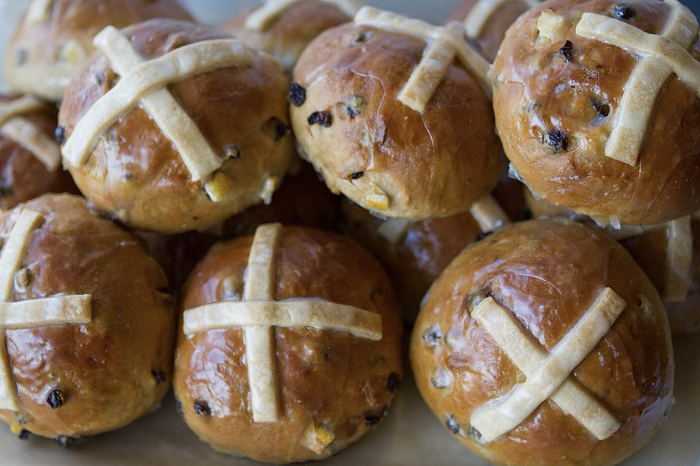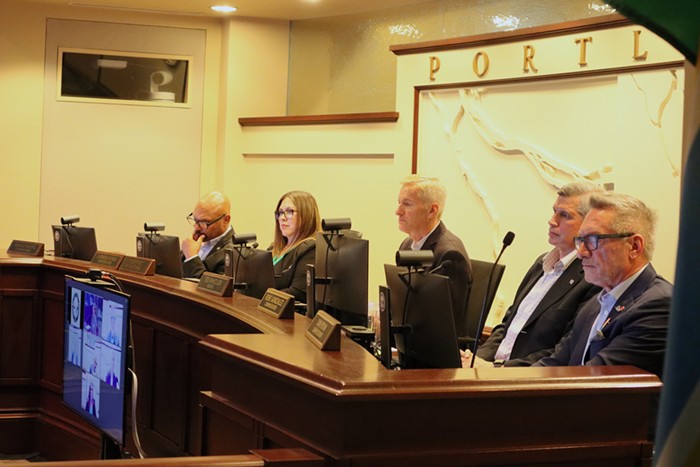IT'S NOT LONG into Haruki Murakami's latest novel that the Japanese author—lifting a quote from Voltaire—points out there's nothing really all that new in the world: "Originality is nothing but judicious imitation."
Certainly this rings true for Murakami himself. From the first page, Colorless Tsukuru Tazaki and His Years of Pilgrimage is unmistakably a Murakami work, where motifs and magical realism are repeated from one novel to the next. The reflections of an adult man on his younger years? Yep. A supernatural, slightly ominous tale? Uh huh. A woman who wears expensive yet understated clothes and has shapely ears? Of course.
Yet each time Murakami dishes up more of the similar, I'm there to lap it up. Colorless Tsukuru Tazaki, released this month in the US, follows the title character as he attempts to solve the mystery of why his four closest friends abandoned him without explanation at age 20. At 36 years old, Tsukuru was left with only guesses as to why he was excommunicated from what he describes as a perfectly balanced fivesome. Perhaps, he surmises, it's that he was the only one whose name did not contain a color: Tsukuru's name means "to build," while the others in the group were known as Shiro, Kuro, Ao, and Aka, the Japanese words for white, black, blue, and red.
It's a classic Murakami tale of redemption, of a man reengaging in his life after spending more than 15 years earning a living building train stations, like his name would suggest, but failing to build anything for himself. It's a journey that takes him as far as Finland and to his hometown in Nagoya, always with an air of mysticism that feels like the supernatural is just behind a sheer curtain, waiting to blow in. Like his other efforts, Murakami's prose strays toward the stilted at times ("The beating of her heart kept time with the slap of the little boat against the pier"). Yet at 400 pages, it's mercifully compact when compared to Murakami's previous 1,000-page brick of a book, 1Q84.
And like all of Murakami's novels, there's the food; a chapter doesn't go by without someone savoring a dessert or a simple Italian meal. Unlike many of his main characters, Tsukuru isn't an adept cook, but one of Tsukuru's college friends is an obsessive coffee connoisseur who makes a mean omelet. (This author loves himself some omelets).
From his descriptions of early-morning spaghetti in The Wind-Up Bird Chronicle to an elaborate feast in Norwegian Wood, some of Murakami's most sensual descriptions are not of sex scenes (which isn't to say there aren't a fair share of those, too), but of food. Usually the two are intertwined. In Colorless, Tsukuru's love interest finished her lemon soufflé, "put her fork down... and seemed lost in thought." She then asks to go back to his place for the night. Devotees have long been penning blog posts and cookbooks based on the meals Murakami articulates in print.
This month, Portland chef Ryan Roadhouse used judicious inspiration from the Japanese author's works to create the nine-course menu at Nodoguro. Roadhouse, an alumni of Yakuza and Masu sushi downtown, has operated Nodoguro as a pop-up since April, and recently announced that he'll be moving into permanent digs in Evoe's space when it closes at the end of this month.
Evoe will be mourned, but judging from the two-hour dining experience Roadhouse is serving up, the space will be well succeeded. The meal was a gorgeous succession of simply prepared dishes made with produce grown in Portland by Phantom Rabbit Farm—they're easily dishes that Mr. Murakami would appreciate. (For $85 a head without drinks or tip, Nodoguro has to be exquisite; luckily, it is.)
It's an omakase progression that began with Torke Oysters with uni and ginger blossom, inspired by the short story "Hotel Lobby Oysters"—the rich creaminess of the uni pinging away with the oyster brine. I've never had the two together before, and now I'll never eat them separately. A delicious smoked mackerel sunomono with egg vinegar, cucumber, and seaweed (Norwegian Wood/1Q84) had knife cuts that were out of this world, with cucumber slices so thin they bordered on translucent.
Diners are offered a few price ranges of sake, one beer choice, and one cocktail to wash it all down. With all the whiskey that Murakami characters down—in Colorless, Tsukuru "drank the Cutty Sark, savoring the fragrance. His stomach grew faintly warm"—I was a touch disappointed not to see it available. I was also sad that spaghetti, the life force behind Wind-Up Bird's protagonist—or a creative play on it—wasn't on the menu, but I get how it wouldn't fit.
Norwegian Wood, undoubtedly Murakami's most erotic and food-centric book, is well represented on Nodoguro's menu. For all the times I've salivated over the elaborate meal Midori prepares for Toru Watanabe, this was the ultimate pay-off. A broiled sablefish and spicy lotus root was subtle in flavor, but buttery and exactingly cooked.
A fig salad with tofu cream, chanterelle, and pine nut (1Q84) was the sole down note, with the mushy tofu failing to pick up any serious flavors from its surrounding ingredients. It's probably because it lacked something like the genius twist Roadhouse put on what may be Murakami's most notorious culinary creation: canned peaches, pancakes, and Coca-Cola, from Hear the Wind Sing. In this case, Roadhouse used cola syrup, which he lightly applied over a crisp pancake and sweetly tart buttermilk ice cream. Eight out of nine ain't bad.
Roadhouse told the Oregonian he plans to stick with his elaborate omakase courses for the time being, and ramp up as he goes along. It may be that such a high price tag won't be sustainable in the long term, as it makes becoming a repeat customer dangerous to one's financial stability. That being said, I'm going to have a hard time not checking out what creativity is drawn judiciously from Nodoguro's September meals—a tribute to Hayao Miyazaki's film My Neighbor Totoro.
See nodoguropdx.com for upcoming dinner dates in September. Reservations essential. Cost ($85) does not include gratuity or alcoholic beverages.




















